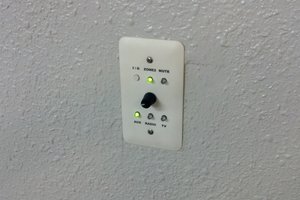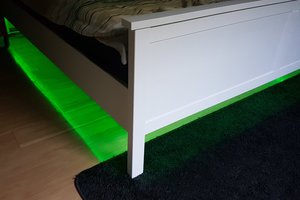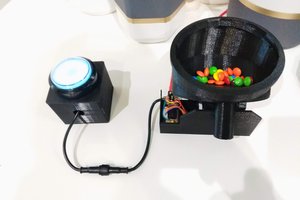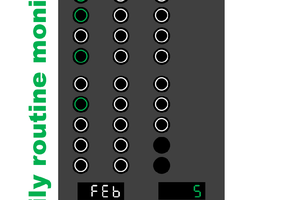Circuit
The circuit consists of 12 Neopixel (SK6812), LED's wired in a ring configuration which is connected to the Plasma 2040 at the screw terminals. 5V to 5V, 0V to -Ve, DA to Din.
The EC11 rotary encoder is connect to the Plasma 2040, VCC to 5V, GND to GND, A to A0, B to A1, C to A2.
Right angle pin headers are used on the EC11 and the Plasma. These are mounted at the back parallel to the back.
All the connections from the EC11 and the Plasma are made using push fit jumpers.
Code
The code is written in Micropython v1.19
There is only one external control element connected to the microcontroller, this being the rotary encoder.
The rotary encoder operates both the colours and the intensity of the selected colour.
Colours: None, Red, Orange, Yellow, Green, Blue, Indigo, Violet, White
Intensity: Off, 12.5, 25, 37.5, 50, 62.5, 75, 87.5, 100 %
The selection is accomplished with the rotary encoder & integrated button using GPIO IRQ Handlers.
3D Printed parts
These consist of the following elements.
1: Rear petals.
2: Front petals with integral shield and control knob.
3: Middle petals with LED's and head adjuster. (2 x parts)
4: Support Grid
5: Hollow ball. (2 x hemispheres)
6: Base.
7: Stalk support (3 x parts)
Operation
Insert the USB lead into the socket at the back and insert into a compatible adapter.
Position the circular base in a suitable location and sit the ball on top.
There is no separate on/off switch everything is controlled by the encoder.
Main adjustment is accomplished by positioning the ball on the base, small adjustments are made by tilting the flower head.
The start up default is all LED's off.
Turn the button left or right to step through the colours, stop turning when the required colour is visible.
The LED's can also be turned off in this mode by rotation of the control.
Press the button to change to intensity mode.
(Default intensity mode is 100%)
Turn the button left or right to adjust the intensity, stop turning when the required intensity is achieved.
Press the button to return to colour setting mode.
The Intensity setting will be applied to all the colours in this mode unless it is subsequently changed.

 mulcmu
mulcmu

 Lex Kravitz
Lex Kravitz
 Jeroen Brinkman
Jeroen Brinkman